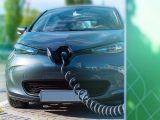
Why EV Charging Stations Are the Future of Urban Living
November 4, 2025Electric vehicles are no longer a futuristic concept reserved for car shows or science fiction films. They’re here, and their presence signals a bold shift in the way we move. With this transition comes a new challenge: ensuring the right infrastructure keeps up. That’s where electric vehicle solutions and the growing network of EV charging stations enter the conversation. Far from being just another service, EV charging is shaping how communities function, how businesses attract customers, and how households rethink mobility.
Preparing for the Inevitable
Planning for the future of transportation is no longer optional. As Singapore positions itself as a leader in green mobility, the demand for electric vehicle solutions will grow. Thinking ahead means recognising that petrol and diesel engines are becoming less viable in the long term.
Governments worldwide are imposing stricter emissions rules, and manufacturers are responding by releasing more electric models.
Forward-thinking drivers and property owners in Singapore are already asking how to integrate EV charging stations into their routines and spaces.
For businesses, this could mean adding chargers in carparks to attract eco-conscious customers. For residents, it might mean installing home-based solutions for daily convenience. The bigger picture is clear: preparing now creates smoother transitions later, while waiting risks being left behind.
Powering a Smarter Network
At first glance, an EV charger might look like a sophisticated version of a plug. But the science behind these systems is far more complex. EV charging stations connect to a power source and to smart networks that monitor usage, balance loads, and prevent grid overloads.
Most chargers fall into three categories: slow, fast, and rapid. Slow chargers may take hours, making them suitable for overnight home use. At the same time, rapid chargers can power vehicles in less than an hour, ideal for commercial hubs. The choice of electric vehicle solutions depends on both user needs and the location’s energy capacity.
In Singapore, balancing this infrastructure requires clever planning. Beyond cables and plugs, EV charging involves software, sensors, and energy management systems working together. The result is an ecosystem designed for convenience, resilience and scalability.
Time Saved, Value Gained
One of the less obvious benefits of EV charging stations is how they boost productivity. Traditionally, refuelling meant detouring to petrol stations, queuing, and losing precious minutes. EV charging changes that dynamic. Drivers can recharge at shopping centres, offices, or even at home while going about their day.
For businesses, this means more engaged customers. A shopper might choose a mall equipped with EV chargers over one without, because they can multitask. Similarly, employees who can charge their vehicles at the office save time and arrive with peace of mind. Productivity in this sense is less about working harder and more about removing friction from daily routines.
On a larger scale, accessible electric vehicle solutions encourage adoption by showing drivers that going electric streamlines lifestyles, turning what was once downtime into productive or enjoyable time.
Choosing the Right Solution
With EV adoption on the rise, many property owners and businesses face a new question: which EV charging stations should they install? The decision-making process involves balancing cost, capacity, convenience, and long-term strategy.
For instance, residential users may opt for slower chargers at home, where vehicles remain parked overnight. Commercial areas, however, benefit more from rapid chargers that serve multiple users in shorter bursts. Meanwhile, workplace solutions often sit somewhere in between, fast enough to recharge during working hours, as intensive as rapid public hubs.
Other factors include safety standards, maintenance requirements, and government incentives. Singapore’s push towards sustainability has created favourable conditions for adopting electric vehicle solutions, but careful planning remains essential. Making the right choice ensures that infrastructure grows sustainably without unnecessary expense.
Conclusion
Electric mobility is a transformation shaping Singapore’s future. By installing EV charging stations and exploring practical electric vehicle solutions, businesses, communities, and individuals are preparing for a smarter, cleaner way of living. For anyone considering whether now is the right time to act, the message is simple: the future of mobility is already here, and your choice is whether to keep up or fall behind.
Explore how EV charging stations could transform your daily routine. Speak with LHN Energy today and take the first step towards a smarter tomorrow.






